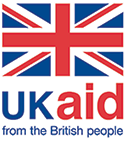This blog was co-authored by Akanksha Sharma and Michael Nique.
Water scarcity is becoming the new normal. Access to freshwater is essential to life – and yet today millions around the world suffer from water scarcity. The lack of access to freshwater affects more than 40 per cent of the global population and the situation is not going to get better in coming years. Some extreme examples include Nigeria, which has declared a state of emergency in the WASH (water and sanitation hygiene) sector to trigger more awareness and investment [1] . In 2015, the country provided clean water to fewer than 10 per cent of its city dwellers, representing a four per cent decrease since 1990.
Global and local actions need to be taken now to change this trajectory. This year, the World Water Week theme was ‘Water, Ecosystems and Human Development’. In the opening sessions, Torgny Holmgren, Stockholm International Water Institute (SIWI) Executive Director, reminded the audience that water is almost a prerequisite for the rest of the development goals of the next decade and a cornerstone of the entire Agenda 2030.
There is a strong link between human development and water access, and at the extreme, environmental degradation, poverty and conflicts. Amina J. Mohammed, Deputy Secretary-General of the United Nations, took the example of Lake Chad, which has shrunk by 90 per cent of its capacity, creating food insecurity, increasing the risk of water-borne diseases and causing poverty amongst millions of farmers. Globally, about 2.5 billion people depend on farming as a livelihood and there are significant shifts in global freshwater resources with high groundwater depletion [2] .
The role of mobile to create more resilient water systems
In collaboration with CGAP and Safe Water Network, the GSMA Mobile for Development Utilities programme organised a session on ‘Digital Finance: Making Waves’. This was the occasion to present some of the learnings from the 21 water and sanitation pilots the GSMA has supported in the past four years and discuss the latest trends we’ve seen in mobile-enabled water solutions [3] .
In the introductory presentations, Daniel Waldron of CGAP, discussed how digital finance can help make water services more resilient by establishing fully-automated service points, support the growth of prepaid water models and combine financing with usage. As Charles Yeboah from Safe Water Network in Ghana remarked, digital finance increases payment collection, reduces customer disputes, enables the consumption of less resources and allows the utilities to collect data.
The following panel which hosted Mary Roach from Loowatt, Dickson Marira from Wonderkid, Sandy Hwang from Safe Water Network and Abigail Steinberg from FIBR, offered insights on how these organisations leverage digital finance and the challenges they are facing in using it.
Dickson Marira talked about how utilities are benefitting from the digital solutions offered by Wonderkid, by reducing non-revenue water, improving operational visibility and building trust between the utilities and customers. Mary Roach mentioned, how with the help of the GSMA Mobile for Development Utilities grant in 2016, Loowatt introduced mobile money payments to their customers to pay for the sanitation services. She went on to explain that it wasn’t easy to get customers accustomed to digital payments. Loowatt had to design a strong incentive to support this transition whereby they increased the price to account for local inflation, and offered a discount equivalent to this increase for customers who paid by mobile money. Overall, going from cash to digital represented a 15 per cent to 25 per cent decrease in Loowatt’s costs, representing a very strong case to digitise sanitation payments. She however emphasised that the fundamentals of running a business need to be in place before an organisation goes on a digitisation journey. Sandy Hwang, talked about the importance of being able to collect 100 per cent of the revenue for high-volume customers in small enterprises, particularly because it can be difficult to increase pricing when trying to serve customers at the bottom of the pyramid.
We interviewed Mary, Dickson and Gregoire Landel (from CityTaps) on these issues – our new video from World Water Week explores the gap in access to water and sanitation services in emerging markets:
We’ve published our latest report on the three key trends in mobile-enabled water delivery that have been tested in a range of countries and have potential to scale. Also, please stay tuned for our blog on findings from our new research on Safaricom and Grundfos Lifelink water ATMs in Kenya.
This initiative is currently funded by the UK Department for International Development (DFID), the Scaling Off-Grid Energy Grand Challenge for Development and
supported by the GSMA and its members.


[1]https://www.globalwaterintel.com/news/2018/16/nigeria-declares-state-of-emergency-for-water-sector
[2]https://www.nasa.gov/press-release/nasa-satellites-reveal-major-shifts-in-global-freshwater
[3]https://www.gsma.com/solutions-and-impact/connectivity-for-good/mobile-for-development/programme/mobile-money/key-trends-in-mobile-enabled-water-services-whats-working-and-whats-next/

